#gabriel’s statue
Text
Gabriel’s (missing) cross
Let’s put everything we know about that spooky statue of the Archangel Gabriel in one thread to make the conversation about its possible meaning as a Good Omens 3 clue more structured. Starting off with the relevant part of the official commentary from X-Ray:
Douglas Mackinnon got one thing wrong in his part of the interview — Gabriel wasn’t carved by “some guy in Italy,” but a British sculptor and prop maker David Field working as a part of the team at 3DEye in London.
Technically speaking, it’s a gorgeous piece of hand-carved expanded polystyrene with a clay sculpted head on top of it — even if the Archangel’s smug likeness isn’t that pleasant to look at, all things considered. The scenic artists from 3DEye made it look like stone afterwards.
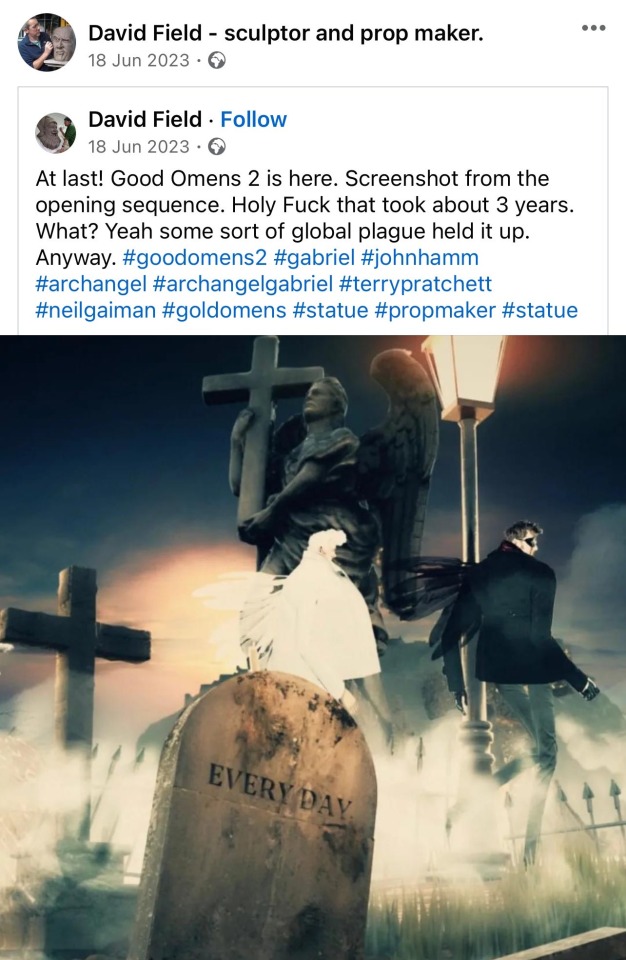
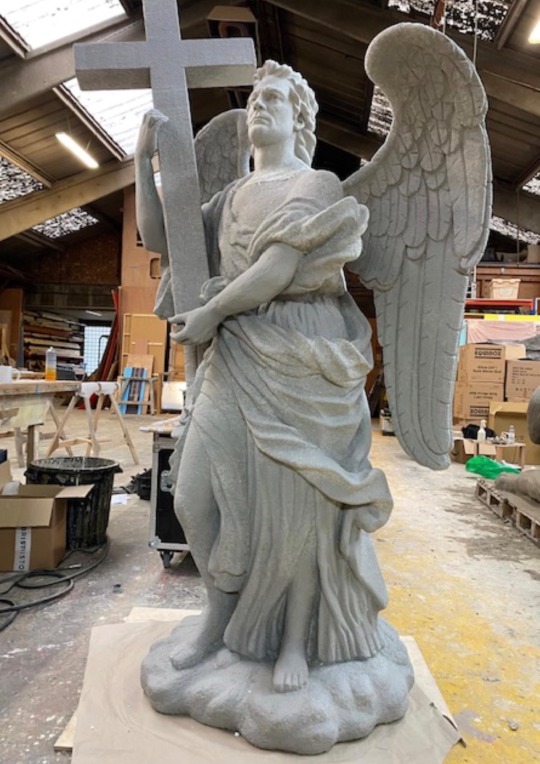
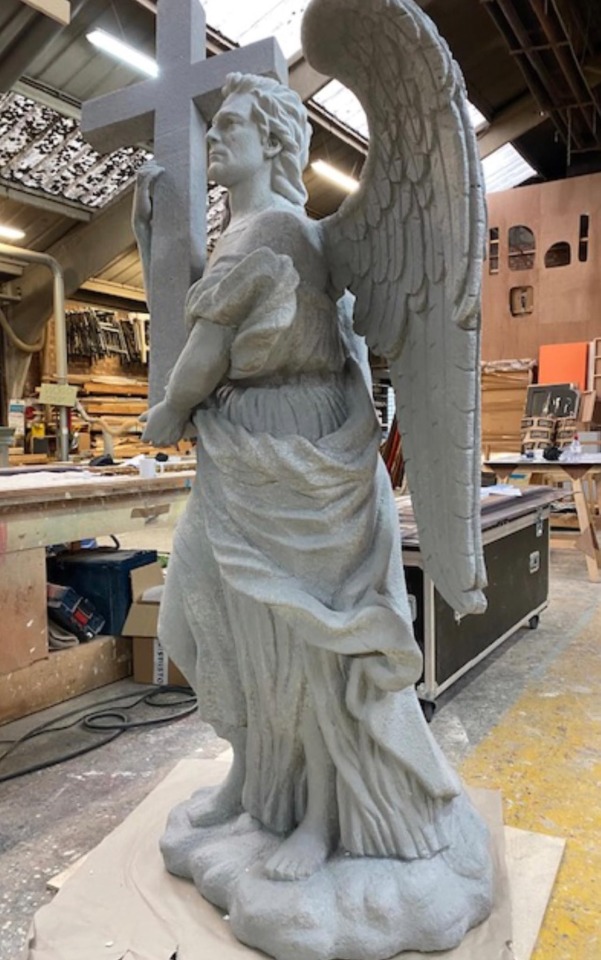
The body itself took ten days to sculpt and is a faithful copy of the famous statue on Ponte Sant'Angelo in Rome called Angel with the Cross by Ercole Ferrata. It stands on the inscription “Cuius principatus super humerum eius” (“Whose government shall be upon His shoulder”, Isaiah 9:16), and this quote makes much more sense for Gabriel than the cross in his hands. The usual iconography of the Archangel uses a trumpet or a white lily instead.
Ponte Sant'Angelo was originally used to expose the heads of those sentenced to death — each of the angelic statues on it carry Arma Christi, the Instruments of the Passion. Like the Second Coming, what seems to be a hopeful message to the Chosen Ones can also be a warning for the others.
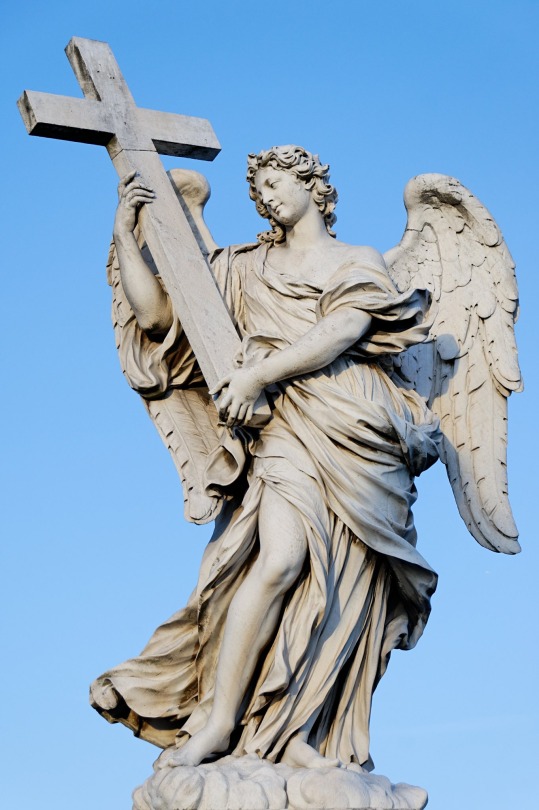

The statue of Gabriel, first shown in full in the cemetery scene of the Good Omens 2 title sequence, reappears at the very end as a part of the bridge leading to the biggest Easter egg — at least according to Peter Anderson, the animator behind it — which is the lift in the background, implying how we’re getting closer towards the Second Coming. Notice how the cross broke down in half at some point between these two scenes!

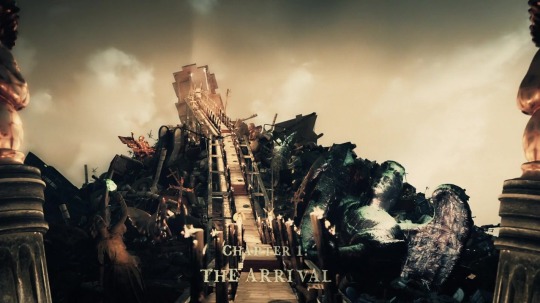
And it disappears in the plot as well: Gabriel’s memory depicts it only from his point of view, with the camera deliberately moving slightly to the right and stopping at his eye level. The centered, establishing shots show the statue with empty hands as a bookend.
I believe that this cross is meant to serve as a foreshadowing, a reminder of the absolution of sins and eternal life through Christ’s sacrifice and Second Coming. We see it only through Gabriel and Aziraphale’s eyes — when Beelzebub looks at the statue, the cross is not there.

As seen in the BTS photos and videos, it’s not an editing error, but a deliberate positioning of the physical props on set. The cross was clearly meant to be a removable part of the statue and displayed in a specific way to convey a message to the audience.
The question remains: is it a reassurance, something to look forward to, or maybe rather a warning?
Not helpfully at all, the traditional use of angelic imagery in Christian cemeteries matches both interpretations.
#everything has a meaning#the good omens crew is unhinged#good omens props#archangel fucking gabriel#gabriel’s statue#good omens#good omens meta#yuri is doing her thing
772 notes
·
View notes
Text
Day 15: Statue

I bet he comes here for hours and stares at it
#good omens 2#aziraphale#good omens fanart#art#crowley#good omens#ineffable husbands#good omentober#gabriel#arch angel gabriel#Gabriel’s statue
23 notes
·
View notes
Text

ego to match mine
#good omens#good omens 2#lord beelzebub#archangel gabriel#ineffable bureaucracy#i'm gonna burst if i had to once again spell 'bureaucracy' or 'ineffable'#gabriel took them to review every statue of himself
1K notes
·
View notes
Text
Gabriel's ineffable statue
Ooh time for my first ever post that isn't a reblog - exciting!
So, a while ago now, I came across a post about Gabriel's statue which pointed out what seemed to be a blatantly obvious continuity error. For the life of me, I CANNOT find that post again and so I am going to attempt to recreate it here because I just noticed something else interesting related to Gabriel's statue. If you are the original person who found this, please let me know and I'll credit you!
Edit: I found the original on reddit! https://www.reddit.com/r/goodomens/comments/17tjfdc/spot_the_difference_statue_of_gabriel_s2e6/
Right, so, have you ever looked very closely at the scenes of Gabriel and Beelzebub in the graveyard during Gabriel's flashback? No? Well, here are some clips of these scenes I want you to take a close look at, taken in order they're shown:



Why is the cross missing??? In the distance shot, there is no cross. In the closer shot, there is. Then we switch back to the distance shot and it's gone again. Just for clarity's sake, when we see the Gabriel statue in any other scene, yes the cross is present.
I know there have been many ineffable continuities mentioned by other posters (such as clocks, chairs, rugs, road markings, Crowley's glasses, Maggie's store signage etc). It's still up for debate about how many of these actually mean anything, or if they are genuine continuity errors. However, I find it VERY hard to believe this is a continuity issue... in any other show I could believe that, sure. But the Good Omens team is detail-focused and this is a huge missing cross on a statue that was specifically built for the show. Why would you have the whole scene set up in the graveyard, but without the cross ready, and then not bother to fix it in post?
So the above is what I read in someone else's blog post and I'm really sorry that I can't recall where to find that. However, here's what I want to add. The Gabriel statue appears at the end of the opening credits and guess what... :
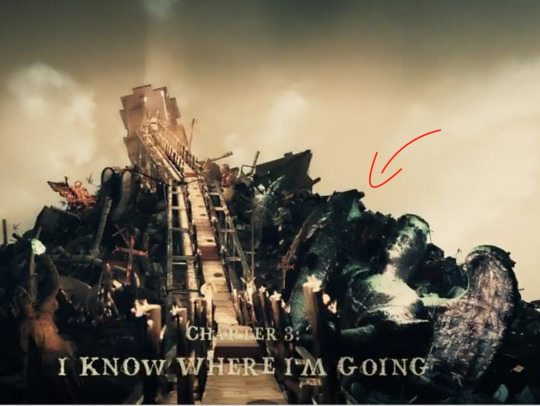
The cross is missing the top half!
What does any of this mean? Who knows? Not me, that's for sure. Is it something to do with S3? Is it some comment on a religious theme? Are Gabriel's memories faulty when they're restored? Several others have pointed out that there are some suspicious things shown in the memory restoration sequence. Why is Gabriel bearing a cross in the first place? If you have any ideas let me know, I'd be interested to hear them!
Regardless of the statue, you might be wondering what is this part of the opening credits all about? The parade of characters is being led by Crowley and Aziraphale up this rickety mountain made of what seems to be a trash heap with a whole bunch of religious iconography scattered through it and a Lady Libertas (aka what the Statue of Liberty is based on) appearing opposite the Gabriel statue here. I always wondered what this whole sequence might be about, but I've seen very little written about it. If you're interested, here's this post from @lady-of-the-puddle. There is a lot of interesting imagery in the opening sequence, that's for sure!
#good omens#good omens meta#good omens theory#good omens clues#good omens 2#gabriel#gabriel statue#opening sequence#opening credits
314 notes
·
View notes
Text

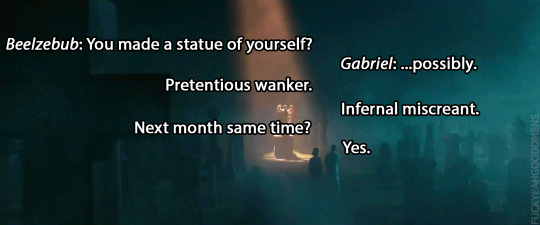
#good omens#gos2#season 2#gabriel#beelzebub#gabriel's statue#ineffable bureaucracy#incorrect good omens quotes#jokes#beez and gabriel together are going to be epic! :)
865 notes
·
View notes
Text

hello everypony. come get some blood
#lettuce art tag#ultrakill#gabriel ultrakill#mlp#gabriel ponykill#i'm still struggling with the tail but it will have to do#he loses alicorn status after the council tells him he sucks
110 notes
·
View notes
Note
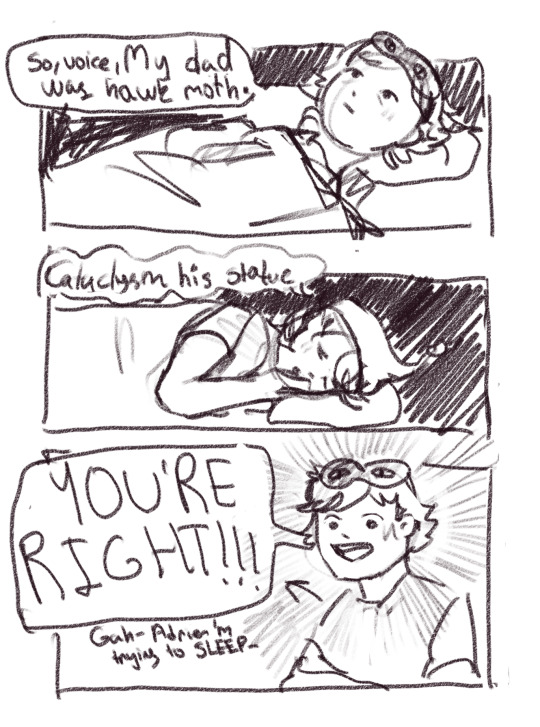
Even now, with his father lost to the universe, and not even a body to bury, Gabriel was still here. He was in his room, in all the belongings his money had bought, in all the clothes that bore his brand. He was in the Miraculous on Adrien’s hand, the twin rings hanging from a chain he could never remove, in all the words Ladybug refused to tell Chat Noir. And he was in the statue in the Place des Vosges, immortalized in gold, looking out at the city with serene contemplation, but never down at Adrien. Never again.
“He was Monarque,” Adrien spoke into the darkness. Maybe Plagg could hear, maybe not. His Kwami was always good about knowing just what Adrien wanted him to know. “My father was Monarque.”
His words hung hollow in the silence, their weight somehow growing heavier on Adrien’s chest as he spoke. The voice didn’t answer, keeping silent long enough for Adrien to wonder, once more, if he really had imagined it.
Then it was there again, as close and clear as though its speaker was in the room with him. You’re Chat Noir, it told him firmly. Cataclysm his statue.
moonie i'm obsessed.
#gonna post the rest on ao3 when it stops being wonky#you finally did it moonie#you finally made me finish a ficlet#i imagine ladybug shows up after this like ‘good job kitty’#then gives him a croissant as a treat#also HAHA can you believe they put the gabriel statue in the place des vosges#RIGHT NEXT TO MARINETTE’S HOUSE#i bet if félix hadn’t suggested cataclysming it to adrien lb def would’ve#ml fanfic#ml fanart#ml comic#twin telepathy au#felix graham de vanily#felix f*th*m#adrien agreste#miraculous ladybug#senti-felix#senti-adrien#ml re-creation#re-creation spoilers#mls5
287 notes
·
View notes
Text
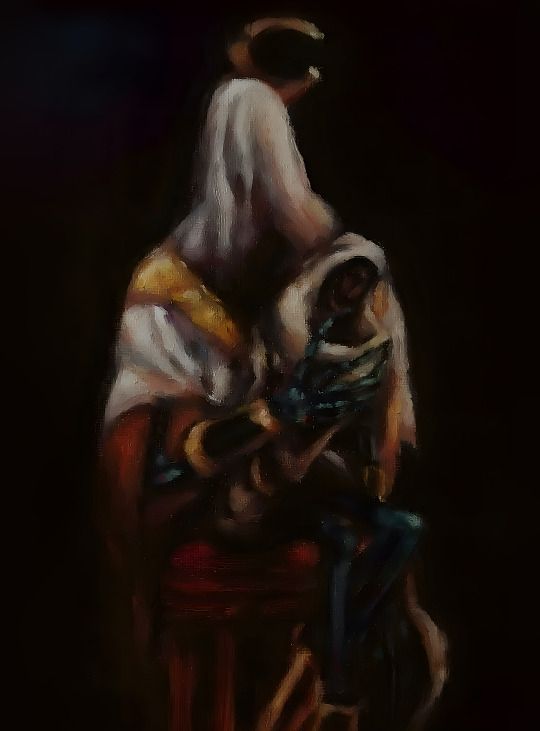


i have not painted in... ~3 years. anyway here's a ferryman holding one of his many idols
#my art#ultrakill#ferryman ultrakill#note: the big image is actually an unfinished version of it because i could NOT get a good picture of the final one -_-#i definitely had NO idea what i was doing. but it was still fun! and now i can look over my shoulder and see my dear ferryman on the wall.#obviously it's just very charming to have a painting of a character who's the subject of like. 3 different in-game paintings. heeheehoo#presumably ferrymen would be responsible for MOST of the art in-universe? like all the gabriel murals and statues surely. that's cute to me#they have nothing to do with all their obol so the ferryman economy consists of them repeatedly commissioning each other back and forth#to paint portraits of either them or gabriel. or of them being sensually caressed by gabriel.#after the death of mankind a ferryman's merit is judged entirely by how lovingly they can render gabriel's midriff#... i think i had a point i wanted to make but it's just entirely lost now. sorry
450 notes
·
View notes
Text

I don't think y'all fully understand how much this pissed me off.
#miraculous ladybug#miraculous#mlb#ml writers salt#gabriel agreste salt#gabriel agreste#mlb monarch#no it being converted from a statue of chloe does not make it better#it actually makes it even worse and the mayor chloe statue was already bad for how goofy it was
57 notes
·
View notes
Note
Everyone saying they were struggling but Gabriel helped to comfort them is really heart warming but also a smidge funny. Nobody here is beating the Gabriel fans are just like Ferryman allegations
Listen I’m just saying if I were the ferryman I would have woken up in bed
Built.
Different.
#if you watched the dev stream you’ll know what this means#but yes it’s true#the allegations..#*hides paintings and statues of gabriel* hi welcome to my home. please don’t look under any of those cloths. those are my uh. experiments.#very sensitive to light please don’t uncover them.#ask#asks#non voice post#I am going to sleep now google
98 notes
·
View notes
Text
Technically Felix knows Gabriel was Hawkmoth and so does Ladybug so now I can only imagine Chat Noir jumping up onto a random roof in the middle of the night and seeing Ladybug and Argos sat down on a different roof with matching t-shirts and caps and upon closer inspection both T-shirts and caps say “Gabriel Agreste hate club” and upon even closer inspection they’ve both got a lot of spray paint and are getting ready to vandalise his statue
#we don’t give child abusers statues in this house#I still stand by my point that melting peoples rings to make a statue is like melting peoples iPhones to make a Steve jobs statue#mlb#chat noir#miraculous ladybug#miraculous#ml#adrien agreste#ladybug#Felix#Argos#felix graham de vanily#gabriel agreste#Gabriel agreste does not need a statue
372 notes
·
View notes
Text
The biggest Easter egg yet
I’ve been meaning to address this for a while now, but @camdenleisurepirates gave me the final push after reading my piece on Gabriel’s cross. Huge thanks for that morsel of motivation, my ADHD brain loves you.
This is going to be yet another long read, although not as extensive as my bookshop statues meta. Still, better get yourself some hot chocolate or another drink of your choice and make sure you’re comfortable!
Now, remember the X-Ray interview with Peter Anderson on Easter Eggs in the opening animation he created for the second season? Forget red herrings, apparently our fandom has a literal red phone box! I’m convinced that this whole scene is a one big — the biggest, actually — Easter Egg, and I’ll explain why step-by-step.
The red phone box Crowley used to warn Aziraphale about the Antichrist and the following Armageddon in S1, the exact one where he left change for an emergency call, seems important enough in terms of the future S3 plot, but there’s so much more going on in this frame. Not only the lift.
The angels
At the very start of this sequence we can see a fragment of an elaborate bridge guarded by cherubs sitting on two columns, maybe globes, leading to a distant structure built over a literal mountain of trash — all elements of the S1 and S2 openings which were consciously picked out by the animators and put together in a very ominous pile.
Ready for some scavenging?


In the Gabriel’s cross meta, I already mentioned the importance of Ponte Sant’Angelo in relation to the ex-Archangel’s statue. Now it’s time to widen our perspective and focus on the full picture — quite literally. Apparently the bridge from the opening sequence has ten statues of angels, exactly as the Italian historical monument.


First things first though: the two big cherubs guarding the entry to the bridge might seem familiar to some of you. While they’re obviously not copies of the same statue, a very similar pair of brass cherubs is placed in Aziraphale’s bookshop to symbolize Aziraphale and Crowley. And looking at the screenshot above and the way they sleep or sulk with their backs turned on each other, they are most certainly not talking. The addition of more than one set of eyes is a lovely reference to biblically accurate angel memes though.
If we assume the traditional left-right positioning of the characters, Aziraphale is on the left and Crowley is on the right. Directly behind Aziraphale we can see a ship named “Good Traits”, but in reverse — kinda sorta confirmed by the animator Peter Anderson to be connected to the concept of the seven deadly sins on Twitter. Same that was mentioned recently by Neil in one of his asks.

The presence of Gabriel — a renegade Archangel wielding a broken cross — on the right, Crowley’s side, seems to match this theory. It could also support one of the possible interpretations of the very last bookshop shot in the S2 finale.
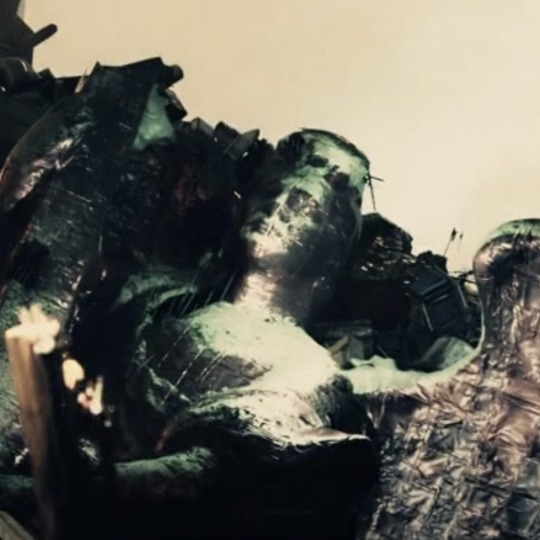
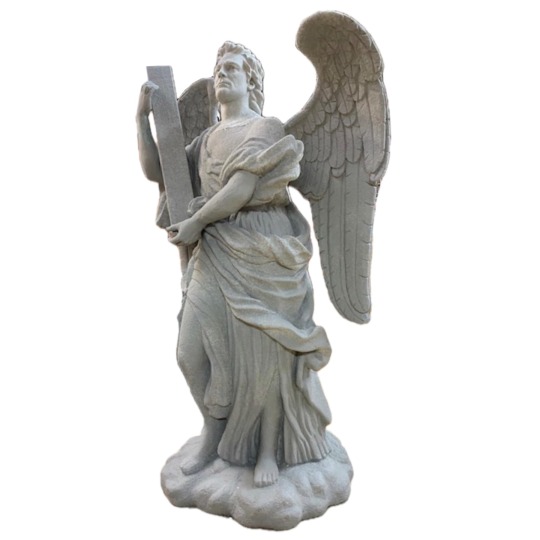
Out of all ten statues, Angel Carrying the Cross by Ercole Ferrata is considered inferior to the others on the bridge in that it appears to be a two-dimensional relief sculpture rather than an unbounded three-dimensional artwork, which seems to match Gabriel’s first impression as a character.
The inscription on the statue reads, “Dominion rests on his shoulders" — that is the weight of the cross that Christ was forced to carry through Jerusalem before being crucified. Even though Gabriel’s burden partially disappeared, the whole bridge and its environment is covered with crosses. It’s clear that we’re looking at a direct parallel of Via Crucis, the Way of Sorrows.
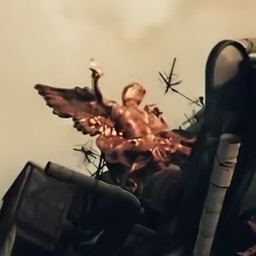
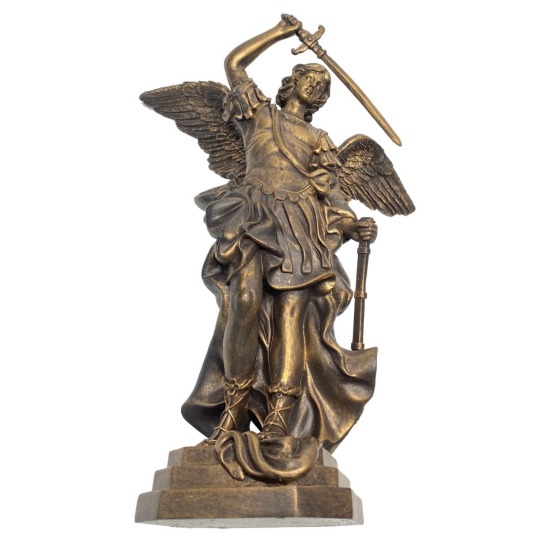
Towering over the Italian bridge, at the very top of Castel Sant’Angelo, is a statue of Archangel Michael, seen as the golden angel on the top left part of the trash pile. Aziraphale’s side, perhaps as his assistant, perhaps a rival? Legends of the Jews mention Michael as the chief of a band of angels who questioned God's decision to create man on Earth. The entire band of angels, except for Michael, was condemned to Fall — which could explain why they have such a good access to the Grapevine That Obviously Doesn’t Exist. And whatever’s going on between Michael and Dagon, perhaps.
In Roman Catholic teachings, Michael has four main roles or offices. Their first role is the leader of the Army of God and the leader of Heaven's forces in the final triumph over the powers of Hell. Viewed as the angelic model for the virtues of the spiritual warrior, their conflict with evil taken as the battle within. The second and third roles of Michael deal with death. Their second role is that of an angel of death, carrying the souls of Christians to Heaven. Michael descends at the hour of death and gives each soul the chance to redeem itself before passing; thus throwing the devil and his minions into consternation. In their third role, Michael weights souls on perfectly balanced scales they are often depicted with as their attribute. In their fourth role, Michael appears as the guardian of the Church. Might be the reason why they’re the closest to the building on top of the mountain.
It looks like Michael lost their sword though, just like Gabriel lost a part of the cross he was supposed to carry. The sword in question was supposed to be used to slay the dragon — Satan, the Adversary — according to John of Patmos and his Book of Revelations.
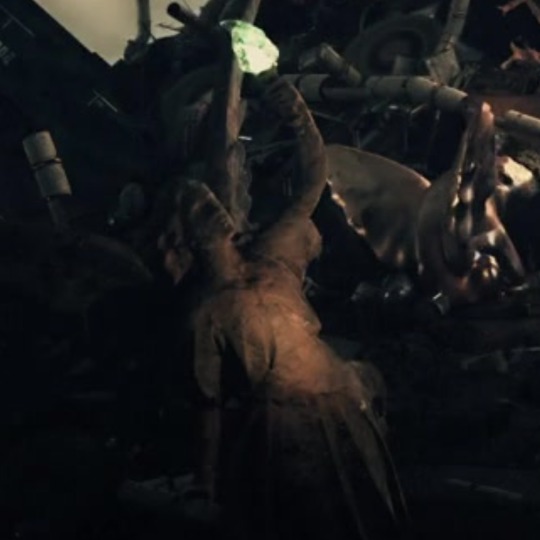
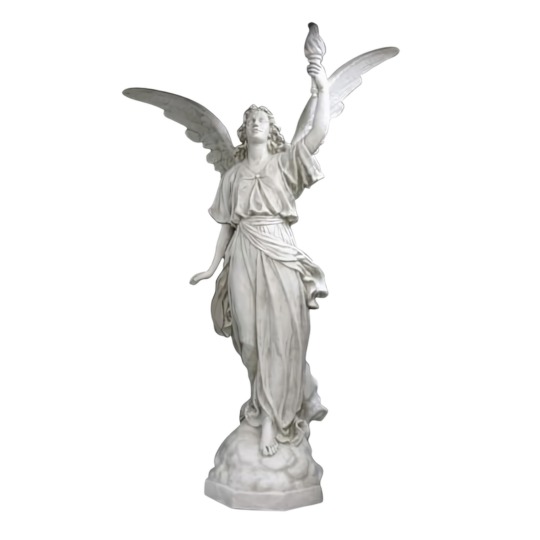
Speak of the devil: interestingly, there are two copies of an anonymous variation of the Angel of Light statue appearing twice on both sides of the bridge. Both the title as well as the statue itself seem like obvious references to one (former) angel literally called the Lightbringer, Lucifer. Perhaps one of them is representing his son, the Antichrist, instead, with the both of them helping out the Ineffables on two opposing — or perhaps only parallel — sides of the bridge?

The light carried by Lucifer appears to be green, a color used in the series as a visual representation of Hell, but on the intertextual level might also serve as a reference to F. Scott Fitzgerald’s classic novel The Great Gatsby and the green light at the end of the Daisy’s dock symbolizing the undying love, desperation, and longing for an unattainable dream. In the story, the color represents the limitations of power and money. Not surprisingly, the novel appears on Jim’s bookshelf and is part of the Good Omens book club — a list of personal recommendations from Neil Gaiman and Douglas Mackinnon for the fans to catch up on before the next series.
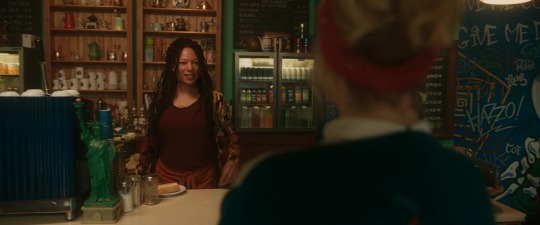
Last but not least, the possible connection to Libertas as the inspiration for the Statue of Liberty, shown multiple times in S2 as a foreshadowing of our character’s trip to America in S3. The related quote of Patrick Henry “Give me liberty or give me death” becomes even more relevant if we consider how the motto of the French Revolution was sometimes written as Liberté, égalité, fraternité ou la mort (“Liberty, equality, fraternity or death”). A lesson surely learnt by a certain angel back in 1793, when he was held prisoner for the last time before being forcefully taken Upstairs in the Final Fifteen.

The bridge and the castle
Okay, these are the basic observations. Now a brief historical overview and we will reach the fun bit in a jiffy.
Have you ever wondered about the meaning of this whole complex? It wasn’t always angelic, but named after a Roman noble dynasty. The Aelian bridge was built by the Emperor Hadrian in 134 AD to span River Tiber from the city center to his mausoleum. With time, the remains of more emperors were put to rest in there, until it was plundered and destroyed in a war. Then the remaining structure was transformed into a military fortress and a castle serving as the papal residence in times of war.

The Papal State also used Sant'Angelo as a prison; the Renaissance philosopher Giordano Bruno was imprisoned there for six years. Executions of the inmates were performed in the small inner courtyard, but they weren’t the only deaths in the area. On the other side of the bridge, in the adjoining Piazza del Ponte, under the watchful eyes of the stone likenesses of two saints, the public executions were held, and the heads of the criminals were brought onto the bridge and exposed to public view there.
As a prison, the former mausoleum is also the setting for the third act of Giacomo Puccini's 1900 opera Tosca. Long story short, the eponymous heroine convinces her lover to feign death so that they can flee together. Unfortunately, they are betrayed and the firing squad shoots at him with real bullets instead of blanks. Tosca believes in the quality of his acting performance rather than the truth, and when the realization hits her, she leaps to her death from the Castel’s ramparts.
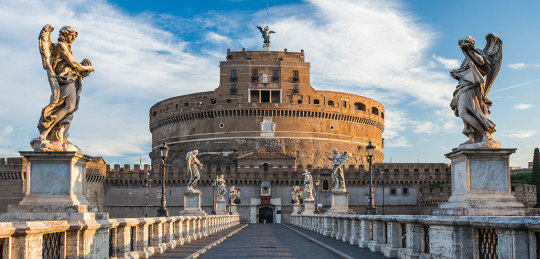
After Nero’s bridge was destroyed, the travelers were forced to cross this bridge as the only direct route to the Vatican and St Peter’s Basilica, earning it the nickname “the bridge of Saint Peter”. That’s why in the 16th century Pope Clement VII erected statues of Saints Peter and Paul at the ends of the bridge, guarding it as they are supposed to protect the entry to Heaven.
In 1688 the bridge was embellished with ten angel statues, five on each side of the bridge, carrying Arma Christi, the Instruments of the Passion. The Good Omens characters represented by those statues in the opening sequence might be other instruments of Christ’s suffering as parts of the system that needs to be overthrown or replaced.
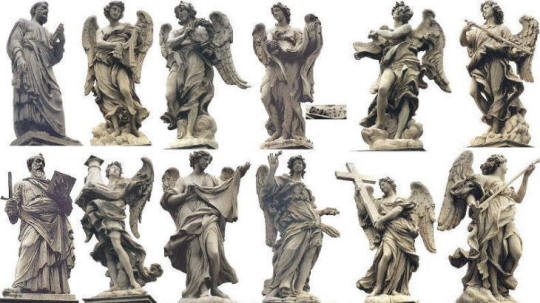
One angel appears particularly important in the context of both the bridge and the Second Coming — Saint Michael the Archangel.
Legend holds that the Archangel Michael appeared atop Hadrian’s mausoleum, sheathing their sword as a sign of the end of the plague of 590, thus lending the castle its present name. A less charitable yet more apt elaboration of the legend, given the militant disposition of this particular Archangel, was heard by the 15th-century traveler who saw an angel statue on the castle roof. He recounts that during a prolonged season of the plague, Pope Gregory I heard that the populace, even Christians, had begun revering a pagan idol at the church of Santa Agata in Suburra. A vision urged the Pope to lead a procession to the church. Upon arriving, the idol miraculously fell apart with a clap of thunder. Returning to St Peter's by the Aelian Bridge, the Pope had another vision of an angel atop the castle, wiping the blood from his sword on his mantle, and then sheathing it. While the Pope interpreted this as a sign that God was appeased, this did not prevent Gregory from destroying more sites of pagan worship in Rome. In honor of the vision and Michael, the bridge was renamed in their name.

What if the procession from the opening sequence was meant to imitate the procession led by the Pope from the legend? What if Aziraphale, now officially a Supreme Archangel, Commander of the Heavenly Host, is the one actually leading it, with Crowley finally at his side as his partner and second in command, just like it was proposed by him in the Final Fifteen?*
What if by some reason, maybe personal ambition, maybe just a tragic coincidence or situational necessity, there really was an impostor in Heaven, and Metatron — the so called Voice of God who seemingly doesn’t speak up for Herself since Job’s test — has been playing a winged version of the Wizard of Oz all along?
It would make just the perfect sense if not for one tiny detail. The procession we see on the bridge is actually led by Crowley, which doesn’t fit the parallel at all — unless it’s actually a proof of an ongoing body swap, as the mismatched names of the actors could also suggest?
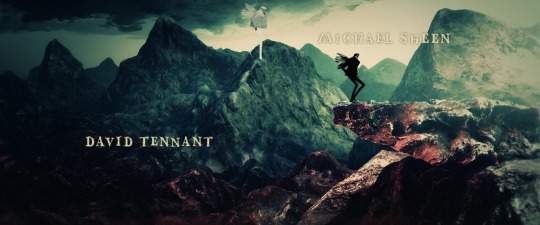
The mountain of trash and the bookshop
The symbolic mountain of trash we can see Aziraphale and Crowley climb is a reference in itself. To an actual mount called Zion, believed to be the place where Yahweh, the God of Israel, dwells (Isaiah 8:18; Psalm 74:2), the place where God is king (Isaiah 24:23) and where God has installed king David on his throne (Psalm 2:6).

In a literal sense, it’s a hill in Jerusalem, although the sources refer to three different locations in different contexts — although for the purpose of this meta the Upper Eastern Hill (Temple Mount) makes the most sense. Its highest part became the site of Solomon's Temple. The same King Solomon the rituals in Freemasonry refer to. Masonic buildings, where lodges and their members meet, are sometimes called "temples" specifically as an allegoric reference to King Solomon's Temple, not actual places of worship. And Aziraphale’s bookshop is built around Solomon’s Magic Circle.
In a metaphysical sense, and especially in the context of the Christian New Testament, it is also believed to be a part of Heaven — the heavenly Jerusalem, God's Holy, eternal city. Christians are said to have “(…) come to Mount Zion and to the city of the living God, the heavenly Jerusalem, to an innumerable company of angels, to the general assembly and church of the firstborn who are registered in heaven” (Hebrews 12:22-23 cf. Revelation 14:1). Just like the procession were following in the opening sequence.

There’s been some speculation whether the lift on top of the mountain could symbolize Aziraphale’s bookshop, or, more specifically, the oculus in its centre. If you look closely at the enhanced screenshot, you can see that the dome isn’t made of glass and that it looks like a tower (a church’s bell tower, perhaps) more than a whole building.
And there is an actual doorway in there — not like the modern lift doors — opening up towards the source of that white, heavenly light. And what kind of enlightenment can you usually find up in the skies or heavens?

We’re welcomed to crack open the doors to the Heavenly Sanctuary — the Most Holy place, Sanctum Sanctorum, the Holy of Holies — to undraw the final curtain and finally stand eye to eye with God. Who knows, maybe even ask some questions or listen to some answers.
Or, at the very least, to meet one of Her forms known as Jesus Christ. Because that’s precisely where he serves as our (humanity’s) Mediator and the Holy Priest after his Ascension to Heaven. The structure at the top reminds of some temple architecture seen in Antiquity and Christianity.
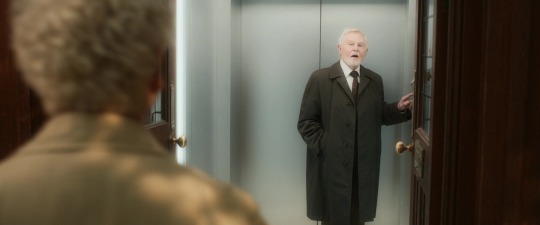
The Catholic Church considers the Church tabernacle or its location (traditionally at the rear of the sanctuary) as the symbolic equivalent of the Holy of Holies, due to the storage of consecrated hosts in that vessel and their meaning as the Body of Christ. Tabernacle is commonly marked with a red light turned on and off depending on His presence or lack if it.
Looks like He’s already in the area, one way or another, keeping eye on some things.
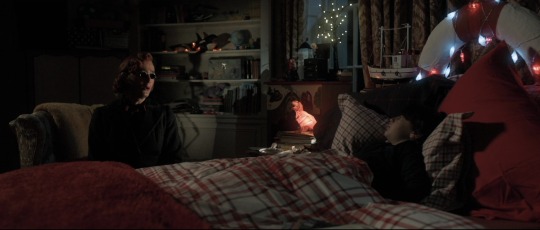

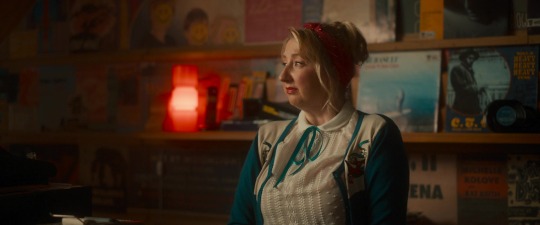

Are we following a procession of believers happy to embrace their one and true Savior? Or are they actually protesters on their way to dethrone the authority and the system?
Guess we will have to wait and see.
#the good omens crew is unhinged#everything has a meaning#title sequence#angels everywhere#archangel fucking gabriel#gabriel’s statue#bookshop statues#statues update#ponte sant’angelo#let there be light#good omens analysis#good omens meta#bible fanfiction#yuri is doing her thing
134 notes
·
View notes
Text


Gabriel edits!!!!!!!!!!!!!!!!!!
#im obsessed wirh finding cool angel statues and editing them#its so silly and fun im so normal abour gabriel#tmc#mandela catalogue#the mandela catalogue#mandela catalogue fanart#tmc fanart#horror#horror art#tmc gabriel#alternate gabriel#angelcore#dark angelcore#religious horror#mandela catalogue gabriel#analog horror#photo edit
126 notes
·
View notes
Text
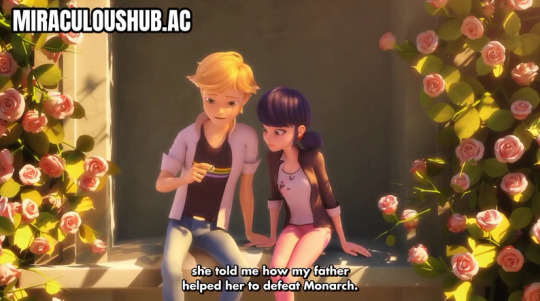
Can we please get the explanation too because that has to be a hell of a piece of creative writing
#Marinette what did you SAY to get him a giant golden statue#miraculous ladybug#adrien agreste#marinette dupain cheng#ladybug#bugnoir#bugnoire#love square#gabriel agreste#hawkmoth#monarch#mlb spoilers#ml spoilers#mlb recreation#ml recreation#recreation spoilers#re-creation spoilers
278 notes
·
View notes
Text

good omens fandom we are getting jesus in s3 what does it mean
#good omens#good omens 2#good omens spoilers#go2 spoilers#ineffable husbands#neil gaiman#david tennant#michael sheen#when metatron was like… second coming#gabriel just staring at that statue of himself…#like NEIL WHERE IS THIS GOING#also metatron sating to zira that he needs someone who knows how human shit works WHATTT#yes I know Jesus was in s1 but I’m talking abt for reals this time
152 notes
·
View notes
Photo





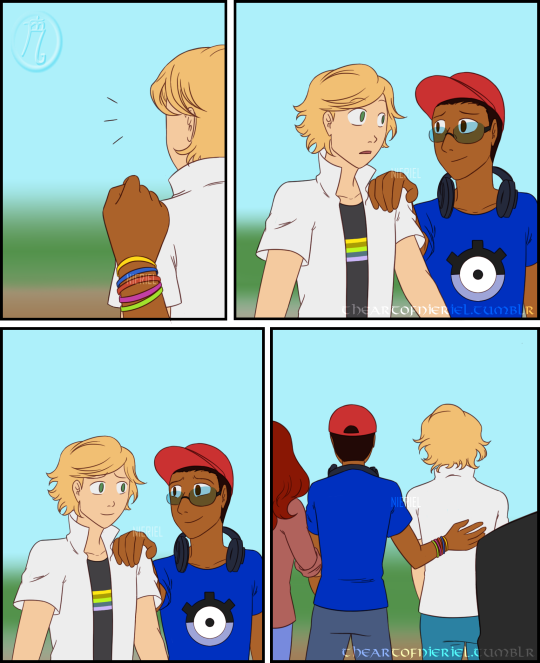

The End: Bad Ending
Adrien loses his life in the final battle when an akuma created to fight Félix’s senti accidentally hits him with its magic. Even Ladybug’s powers can’t undo that kind of damage. Because of that, Gabriel decides to make the ultimate sacrifice to save his son.
[Good Ending]
-
reblog, don’t repost. thank you
#drew this before christmas and I’m speechless...#i based this on the statue pic that was leaked months ago#miraculous ladybug#miraculous the tales of ladybug and chat noir#gabriel agreste#adrien agreste#marinette dupain cheng#nino lahiffe#alya cesaire#miraculous fanart#ml comic#but they're also worse!#thanks zag but no thanks#drew this in december 2022 finished in early january 2023 and publishing now...#why? procrastination...#at least it's out#TheEndAU#Nieriel#2022
211 notes
·
View notes